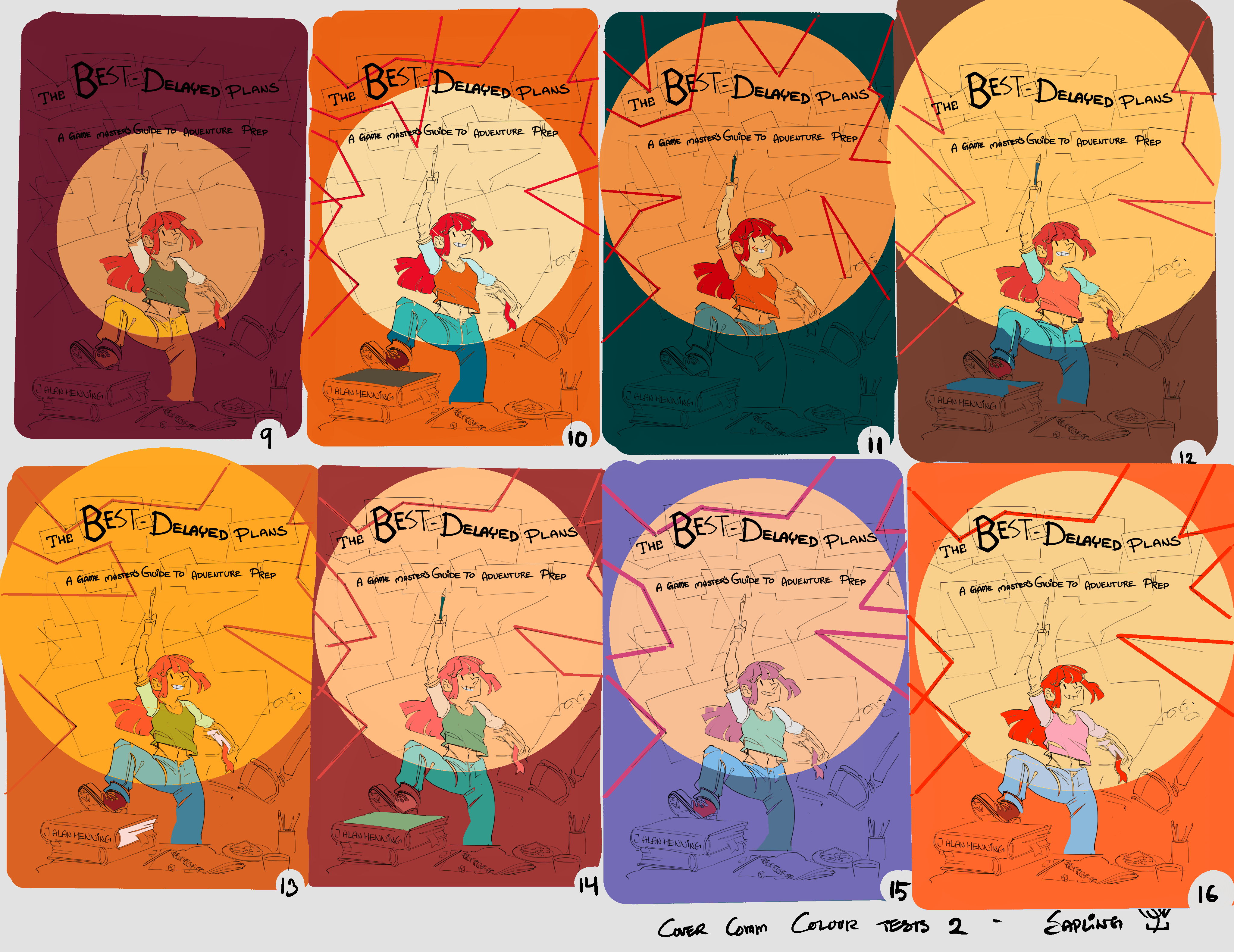DMs and GMs have a lot of different ways they can prep for role-playing sessions, as I’ve learnt over the past three years:
- Prewritten Modules – When I took up DMing again, I turned to the DMs Guild for 5e adventures. I tended to buy Adventurers League modules – designed for 4 hours of play, they were quick to print out, read, and make notes on. (Less intimidating to me than a full book.) As a bonus, a module would sometimes last our open-table group two or three sessions. I gravitated towards modules set in Melvaunt, part of Forgotten Realms; there are lots of blog posts and wiki articles about the overall setting.
- Lazy DM’s Homebrew – It wasn’t long before I began homebrewing sessions, lightly adapting Matt Shea’s Return of the Lazy DM template of 8 types of items to prep. This is a great technique – minimalist but not too minimal – when first branching into homebrew. And it has legs – I still use it many weeks.
- Campaign Setting with Random Generators – After running the Melvaunt campaign for a year, I decided to homebrew my own setting for an O5R campaign, using Text Mapper to create a random map and Hex Describe to create a hexcrawl. I swapped out Hex Describe’s deities for my own one-page pantheon.
- Location–Based Prep – The classic technique, which began with the birth of the RPG hobby in the 70s, is to do a dungeon map and annotate what is in each room. Disappointed that Hex Describe didn’t have dungeons (at the time), I collaborated with Alex Schroeder and with Ktrey Parker to develop an integrated one-page dungeon generator. That worked out so well we added a one-page generator for keeps and settlements.
- Laptop Improv – I found myself using a laptop while DMing (I had used a three-ring binder before) and found that I could rely on Google to help improvise during play.
- Monty Hall Prep – On nights I hadn’t done much to prep, I’d turn to Monty Hall Prep – prepping three encounters the players could start off the night with, then foreshadowing them and let the PCs choose between them in play.
- One–Shot Prep – After DMing about 100 sessions of 5e, I was ready to make a switch: enter Dungeon World (which again I learned about from Matt Shea). I ended up running three DW campaigns (same setting as my O5R campaign), but early on ran a couple of Dungeon World one-shots to help learn the system. For those, I found a ton of resources that, while specific to prepping for one-shots, can be useful for campaign prep as well.
- PbtA Prep – Some DW-style prep works well for any PbtA game. As I was first learning to GM DW, I found it useful to prep by brainstorming the outcomes of PbtA moves in advance. While I kept my campaigns Rules As Written for the most part, I did tweak the end of session move over time, and kept that in mind as I prepped: what would players earn XP for? Best to prepare items that will get them XP. (XP in PbtA games is often in the single digits, not the thousands.)
- Stars & Wishes – I integrated Stars & Wishes, which turned out to be a great tool for learning what players value and want to see in a future session; I keep a list of Wishes and review it when I prep.
- Specialist Prep – For some sessions, I’d prep a mystery structure, a party plan or social event, or a Monster of the Week mystery countdown.
- Threat Maps – These diagrams provide a structured overview of a campaign centered on a holding or base. I use threat maps as campaign prep before I do my session prep for Stonetop.
- Other General Prep – For other sessions, I might turn to the 7-3-1 technique or 10-item prep.
These days I’m still using the core of the Lazy DM outline, supplemented by the other techniques. Sometimes I find switching prep techniques just helps be to me more creative and motivates me to actually do some prep! Which, of course, is what I should be doing now!
Updates: These essays are now collected in my free ebook, Best-Delayed Plans. Post updated 2022-04-03 with link to threat maps post. Updated 2022-08-13 with link to mystery countdowns.
Photo credit: For the cover of Best-Delayed Plans, I commissioned Lady Sapling, who did a phenomenal job capturing and improving on my vision. The cover image shows some of her concepts. Check out her portfolio!

